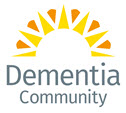Putting EDI into practice – key principles and guidelines
Williamson T (2023) Putting EDI into practice – key principles and guidelines. Journal of Dementia Care 31(5)12-15.
What do the terms equality, diversity and inclusion (EDI) mean in dementia care, what is their legal basis and how can they be effectively implemented? Toby Williamson and colleagues explain the key terms and principles and provide practice guidelines. We explain what the terms equality, diversity and inclusion (EDI) mean in the context of service delivery, care and support for people affected by dementia, including family carers. Our aim is to show how equality legislation can help good EDI practice focus on different groups in the population who may experience disadvantage and discrimination, such as minority ethnic and LGBTQ+ communities. We also emphasise that EDI is at the heart of all good person-centred care in dementia because dementia can be considered to be a disability and people affected by dementia have many identities including ethnicity, gender, sexual orientation and age; this is known as ‘intersectionality’. In conclusion, we outline key principles and practical guidelines for practitioners and organisations to put EDI into practice. “EDI doesn’t really apply to us.” Or does it? A case study All the residents in a dementia specialist care home are of white British heritage which reflects the community where it is located, although the home has very few links with the community. Most of the residents are women. How might EDI apply? Just because the demographic characteristics of the residents appear quite similar, this doesn’t mean there isn’t diversity: EDI stands for “Equality, Diversity and Inclusion” (some people prefer “Equity” to “Equality” – see below). EDI has become a key concept in public policy and practice, including health, social care and housing. EDI describes how services should be developed and delivered to take into account the different histories and needs of people from diverse communities (including experiences of discrimination, disadvantage and exclusion). But what do the words that make up EDI mean? What is the relevance of EDI to dementia care and people affected by dementia? How do I put EDI into practice as a practitioner, or in an organisation involved with dementia? How does EDI link with person-centred care? This article tries to give some answers to these questions and provides some EDI principles and practical guidelines for individuals and organisations. What is EDI? “Equality” is about ensuring that everyone is treated fairly, taking into account the discrimination and disadvantage that some groups in the population experience. It is not about treating everybody the same, because people have different needs from each other. Some prefer the term “equity” because it recognises the need to provide additional or tailored support in response to the disadvantages that people from some groups are faced with. The reason that we prefer to stick with “equality” is that it makes a clear link with the Equality Act 2010. The Equality Act identifies groups in the population who may experience discrimination and disadvantage, defined as groups with ‘protected characteristics’, such as race or ethnicity. The Act puts the onus on society at large, not members of those groups, to address inequalities by prohibiting discrimination based on a person’s protected characteristics. It requires organisations to make “reasonable adjustments” for its employees, customers and service users with protected characteristics so they are not disadvantaged or excluded. Examples include “cultural competency” training for customer-facing staff about LGBTQ+ issues, or making shops and workplaces accessible for people with physical and sensory impairments. The Equality Act therefore aims to put equity into practice. Cognitive impairments caused by dementia can constitute a disability which is a protected characteristic, so people with dementia are covered by the Act. In some ways “dementia friendly communities” reflect the spirit of the Act and a commitment to ensuring greater fairness for people affected by dementia, including raising awareness and challenging stigma through the Dementia Friends initiative, and the provision of dementia-inclusive design and signage in buildings. Some factors that can lead to inequalities and disadvantage are referred to in the Act but are not defined as protected characteristics. These include caring responsibilities and socio-economic disadvantages, such as having a low income or living in a socially deprived area. (The latter can put people at greater risk of developing dementia compared to more affluent people (Voluntary Organisations Disability Group 2016)). Other groups not named in the Act, such as travellers, homeless and prison populations, and geographically isolated groups may also experience discrimination and exclusion. “Diversity” reflects society’s broad mix of people and communities. It relates in part to different population groups as defined by their protected characteristics but also refers to differences between individuals. Recognising and responding appropriately to the diversity of individuals, and the population groups they are part of, is a key component of person-centred dementia care. As the saying goes, “When you’ve met one person with dementia, you’ve met one person with dementia.” But it’s vitally important also to understand the population group they are part of, such as their gender, their age, and whether they belong to a minority ethnic or LGBTQ+ community. In many cases, an individual belongs to more than one group which experiences discrimination and disadvantage, such as being black and gay; this is known as “intersectionality”. “Inclusion” should also be a key component of person-centred care. Inclusion in dementia care means ensuring that no one affected by the condition is excluded from their communities or from services because of dementia-related stigma or discrimination of any kind. Generic services used by people with dementia, from GPs through to shops, public transport, or cultural and leisure organisations should ensure they are dementia-inclusive and accessible. Inclusion also means that services providing dementia care and support must ensure that they are not inadvertently excluding people with protected characteristics, especially those from minority communities. Dementia practitioners and services may need to be proactive in reaching out to specific communities. The Equality Act prohibits discrimination based on age, and it is worth noting that for people with dementia, age discrimination may work in more than one way. Older people experience discrimination in society, and dementia is associated with old age, which may explain why dementia services and research are not as well-funded as other widespread conditions such as cancer. However, people who develop dementia at a young age are less likely to get a timely and accurate diagnosis than their older peers, and may find that the only support available is inappropriate for them, and experience additional discrimination and exclusion. Awareness of human rights is another vital component of EDI. The UK has signed the United Nations Convention on the Rights of Persons with Disabilities (UNCRPD). This aims to make human rights meaningful for people with disabilities, taking into account additional disadvantages they may face. Like the Equality Act, the UNCRPD includes people with cognitive impairments, and services for people with disabilities should be compliant with it. The UNCRPD protects individuals, but also places a responsibility on wider society to ensure that people with disabilities have the same access to services and can participate in their communities on an equal basis with people who don’t have disabilities. This is based on the ‘social model of disability’ (McGettrick & Williamson 2015). Some people with dementia and family carers have been involved with working out how different aspects of EDI can be of help to them, including their rights under the Equality Act and the UNCRPD (DEEP & Innovations in Dementia 2016). But EDI applies to all people with dementia, whether or not they are aware of it, so the responsibility for putting it into practice lies with organisations and practitioners. EDI principles EDI may sound very challenging, but we have devised the following principles and guidelines to help organisations and professionals understand and implement EDI in the context of dementia. EDI guidelines We suggest the following guidelines for organisations to put EDI into practice. Conclusion EDI in relation to dementia should not be seen as only relevant to certain services or in certain areas, or as too difficult or niche to implement. If you are providing good person-centred care, you will be responding to the diversity of experience and needs that people affected by dementia have, and doing this in a way that that does not exclude because of age, ethnicity, sexual orientation, low income or any other characteristic. Addressing inequalities and inequities will therefore be a central part of what you do and EDI will be embedded in your work, and professional DNA. We hope this article will help all practitioners and organisations to apply EDI in dementia care. EDI should be embraced – it’s what “good” looks like. References DEEP, Innovations in Dementia (2016) Our Dementia, Our Rights. Available at: http://www.innovationsindementia.org.uk/wp-content/uploads/2018/01/Our-dementia-Our-rights-booklet.pdf Toby Williamson is an independent consultant who does research and evaluation, workforce, service and policy development work, in adult and older people’s mental health, dementia, and mental capacity. He was supported by colleagues on the Dementia Community EDI Working Group: Karan Jutlla, Jude Sweeting, David Truswell and Lucy Whitman.
Toby Williamson is an independent consultant who does research and evaluation, workforce, service and policy development work, in adult and older people’s mental health, dementia, and mental capacity. He was supported by colleagues on the Dementia Community EDI Working Group: Karan Jutlla, Jude Sweeting, David Truswell and Lucy Whitman.
McGettrick G, Williamson T (2015) Dementia, rights and the social model of disability. London: Mental Health Foundation.
National Institute for Health and Care Research Equality, Diversity and Inclusion Strategy 2022-2027. London: NIHR.https://www.nihr.ac.uk/documents/equality-diversity-and-inclusion-strategy-2022-2027/31295
Voluntary Organisations Disability Group (2016) Dementia, Equity and Rights. London: Voluntary Organisations Disability Group.
